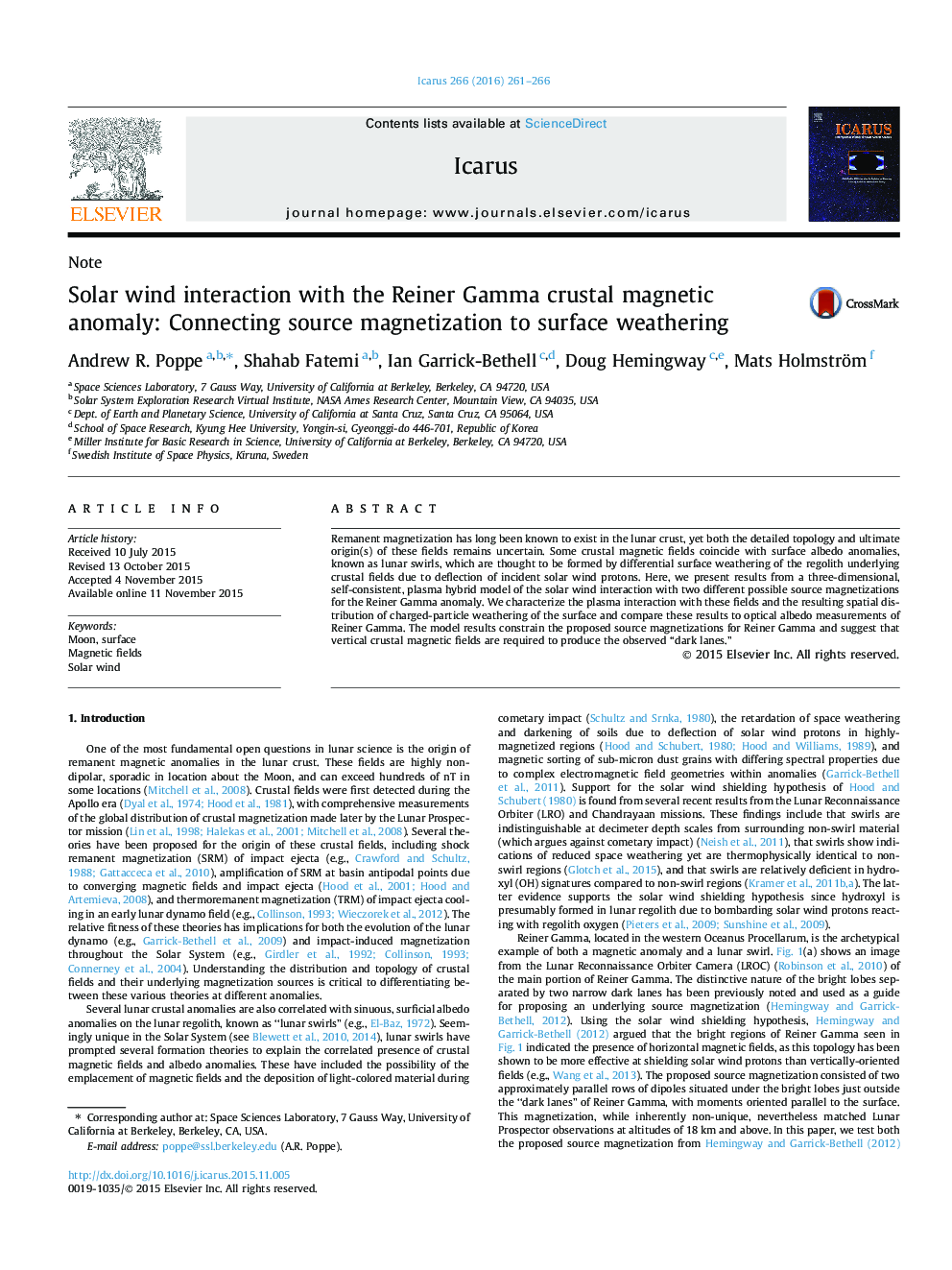| Article ID | Journal | Published Year | Pages | File Type |
|---|---|---|---|---|
| 8135759 | Icarus | 2016 | 6 Pages |
Abstract
Remanent magnetization has long been known to exist in the lunar crust, yet both the detailed topology and ultimate origin(s) of these fields remains uncertain. Some crustal magnetic fields coincide with surface albedo anomalies, known as lunar swirls, which are thought to be formed by differential surface weathering of the regolith underlying crustal fields due to deflection of incident solar wind protons. Here, we present results from a three-dimensional, self-consistent, plasma hybrid model of the solar wind interaction with two different possible source magnetizations for the Reiner Gamma anomaly. We characterize the plasma interaction with these fields and the resulting spatial distribution of charged-particle weathering of the surface and compare these results to optical albedo measurements of Reiner Gamma. The model results constrain the proposed source magnetizations for Reiner Gamma and suggest that vertical crustal magnetic fields are required to produce the observed “dark lanes.”
Related Topics
Physical Sciences and Engineering
Earth and Planetary Sciences
Space and Planetary Science
Authors
Andrew R. Poppe, Shahab Fatemi, Ian Garrick-Bethell, Doug Hemingway, Mats Holmström,
